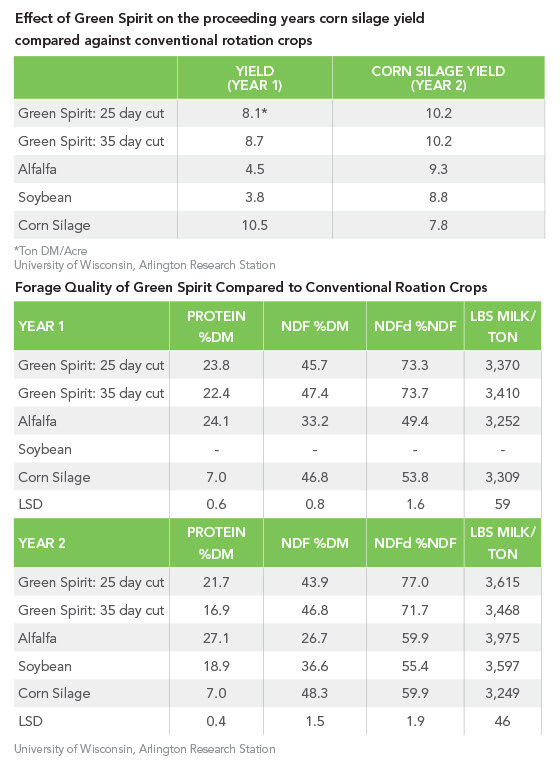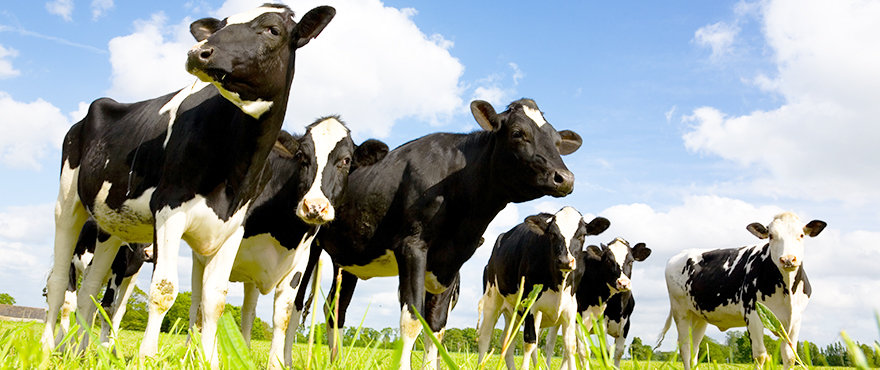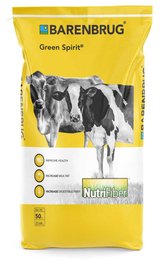Green Spirit®
Green Spirit® provides excellent quality forage for up to two years, depending on climate and available moisture. Due to its quick regrowth, very early development in the spring and prolonged growing period in the fall, this species usually has greater overall productivity than other cool season grasses.
Green Spirit is the perfect blend of diploid and tetraploid Italian ryegrasses that provide exceptional high-quality forage. Combining tetraploid and diploid varieties maximizes the advantages each has to offer. Our tetraploid varieties provide high dry-matter production and improved palatability. Our diploid varieties are added for better persistence to traffic tolerance and disease resistance.
To ensure you receive true Italian cultivars instead of annual, Green Spirit offers the best genetic purity on the market. A true Italian ryegrass needs a period of cold temperatures to vernalize, and once vernalized, the plant can produce seed heads. In the northern US, Green Spirit can be planted in the spring and most plants will stay vegetative until it has vernalized the following winter resulting in the highest quality feed. In the southern US, Green Spirit is usually planted in the fall and harvested until temperatures rise in summer. Green Spirit comes from our NutriFiber™, Pinpoint™, and CoverGraze™ families of products.
Purchase Green Spirit® Today!
Key Features
- High dry-matter production
- Harvest 4-5 times per season
- Little to no seed heads during the first year
Technical Information
Establishment
Green Spirit® may be planted in the fall or spring. We recommend drilling Green Spirit for best results. Prior to planting, apply 100 lbs of a 20:20:20 fertilizer. For fall planting, plant immediately after harvest to improve establishment and graze or cut prior to winter in order to thicken the stand and promote winter survival. For spring planting, plant early in the spring. Green Spirit may be planted via full-cultivation, no-till drill or broadcast seeding. When planting as a nurse crop for a perennial or interplanting into an existing alfalfa stand broadcast or drill in a manner to stagger the placement of Green Spirit with the other crop.
Seeding Rate
Seeding Rate: 30-40 lbs/acre
Planted as a nurse crop: 5 lbs/acre
No-till into winter-killed alfalfa: 25 lbs/acre
Plant Depth: 1/4 inch
Management:
Grazing systems: graze 6-8 inches down to 3-4 inches
Cutting systems: harvest at 12-18 inches
Green Spirit responds well to nitrogen fertilization
It is recommended to apply 40 units of nitrogen following each cutting
Adaptation: Climate
Green Spirit is suited for all planting zones. In the northern United States, it can be used as a spring planted annual crop. In the transition zone it performs as a biannual forage crop. In the southern U.S., it is suited as an annual crop for winter production in mono-stands or in mixtures with winter cereals. Green Spirit performs well in the western U.S. with supplemental irrigation.
Adaptation: Soil
Green Spirit is adapted to a wide range of soil conditions - it performs in heavy clay soils and light sandy soils.
Trial Data




